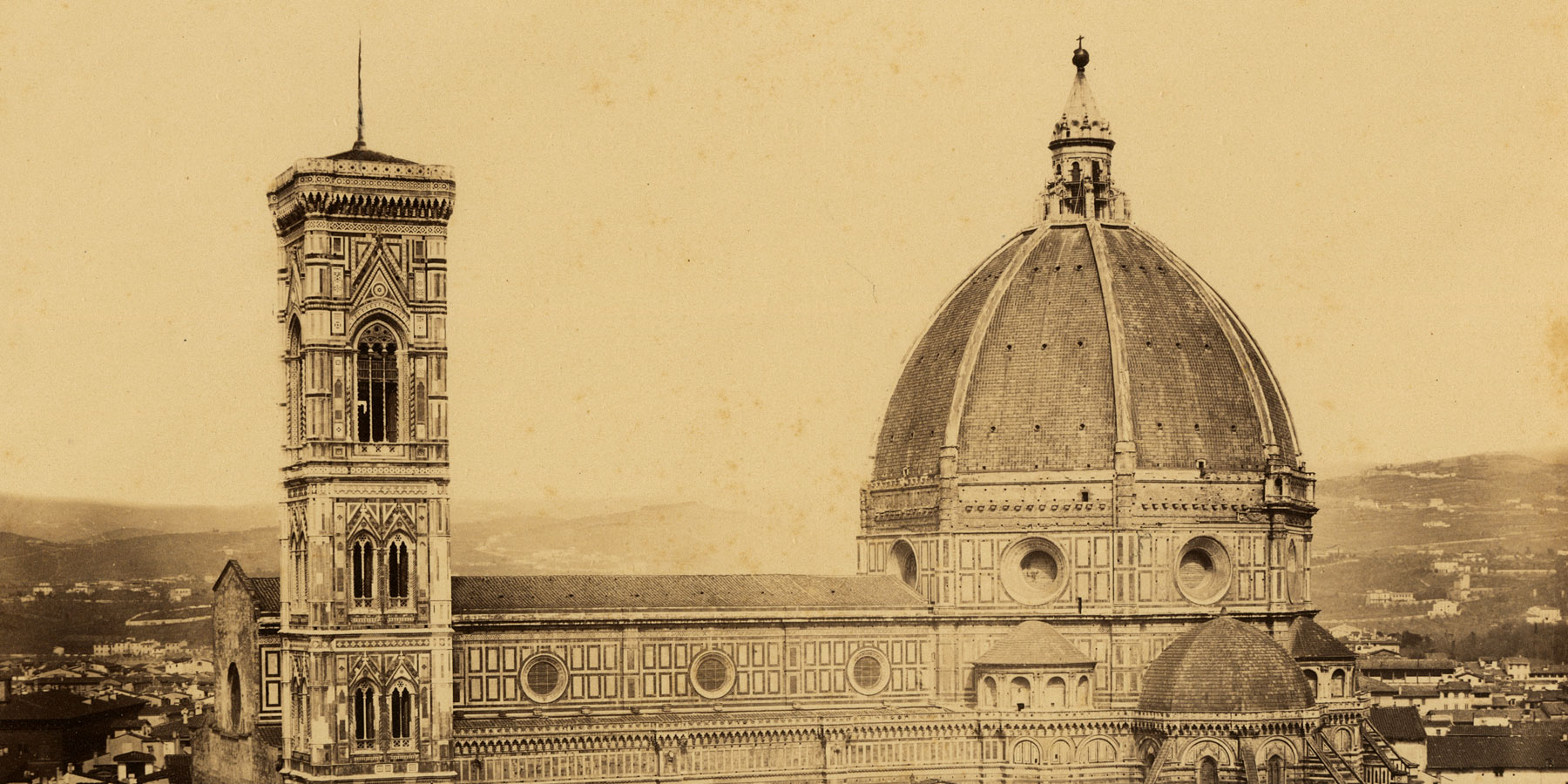John Brampton Philpot and Photography in 19th-Century Florence
The photographer John Brampton Philpot was born in 1812 in Maidstone, England. As an adult he became a copperplate printer, but in 1850 he moved to Florence, Italy, and undertook professional studio photography. He remained there until his death in 1878. Often referred to by his Italianized name, Giovanni Brampton Philpot, he marked his work with an assortment of dry seals to indicate the locations of his studio. The majority of Philpot photographs in the department of image collections are marked with his seal, J. B. Philpot. Firenze. Borgo Ognissanti No. 17. Two albums in the collection, however, are attributed to the studio of Philpot & Jackson No. 17 Borgo Ognissanti, referring to an unknown associate. Philpot’s turn to photography was certainly influenced by the swift development of photography in the middle of the 19th century and the ample opportunities this presented to an eager market. Italian cities saw a frenzied competition to establish themselves as centers of photography. Florence was home to a host of studios and independent photographers of local and international origins, leading to a diversity of perspectives and subjects.
Click on a slide above to view a larger image and detailed description (30 images total)
Philpot arrived in Florence with a daguerreotype device; soon after his arrival, however, he became one of the first in the city to produce calotypes. He was further distinguished for his stereoscopic images and was able to capitalize on the tourist market in Florence, particularly with English speakers. These photographs captured the city of Florence and aided in preserving a historical image of the urban landscape at a time when the city was undergoing extensive renovations and developments. For example, in a signed photograph looking northward through the Piazzale degli Uffizi onto the Palazzo Vecchio, Michelangelo’s David can be seen in the Piazza della Signora under an awning. The sculpture stood in this location for more than 300 years, until it was moved to the Galleria dell’Accademia for protection in 1873.
Not only did Philpot capture fleeting views of Florence, he also participated in the preservation and dissemination of art collections, at a moment when accessibility of collections through images was just beginning to be explored and valued. Beyond picturesque views of Florence, Philpot utilized his skills to photograph art collections, devoting significant attention to the holdings of the Galleria degli Uffizi, from sculptures to old master drawings and prints—the latter two which were compiled into albums, including Photographs from Original Drawings by the Old Masters, two editions of which are held by the National Gallery of Art department of image collections. These editions focus primarily on Philpot’s photographs of works on paper, both single photographs and those bound in albums; however, there are also some examples of sculpture and architecture, all of which provide a view onto 19th-century Florence—both in the arts and in its urban fabric.
The library is open Monday through Friday 11:00 a.m. to 4:30 p.m. We are closed Saturday, Sunday, and federal holidays.
To help us prepare materials ahead of your initial visit, we recommend you request an appointment.
Location
National Gallery of Art East Building
4th Street and Pennsylvania Avenue NW
Washington, DC
Mailing Address
Image Collections
National Gallery of Art
2000 South Club Drive
Landover, MD 20785
Contact [email protected] or call (202) 842-6026






























